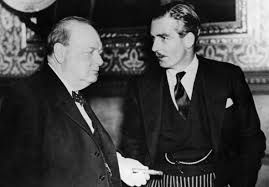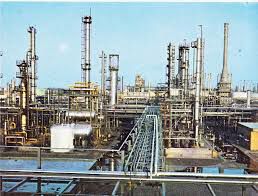1948: THE BRITISH LABOUR GOVERNMENT AND THE COMING OF THE ANGLO-IRANIAN OIL COMPANY’S CRISIS
Abadan was developed into a ship repair centre. A major plant for the produce of 100-octane aviation spirit was built; this proved invaluable for wartime supplies to all the Allies, including the Soviet Union. In 1945, oil production in Iran was 19.2 million tons, well above the pre-war peak of 10.2 million tons.
The Soviet Union’s involvement in Iran led, ironically, to a further revision of the agreement between the Anglo-Iranian Oil Company and the Iranian Government. AIOC’s concession area did not include the five northern provinces of Iran. There was therefore room available for other companies to seek concessions. In 1943 there were tentative approaches from Shell and from two American companies, although these came to noting. More seriously, strong pressure for a concession in the north was mounted by the Soviet in the second half of 1944. When the issue came to the Majlis in December 1944, nationalist sentiment led to the passage of a bill prohibiting negotiations for the letting of any oil concession to foreigners. The mover of the bill was Dr. Muhammad Musaddiq. The continuing Soviet demand for a concession in the northern provinces was coupled with their refusal to leave Iran within six months of end of the war as they had promised (parallel to the British evacuation of the south). Under Soviet protection an autonomous regime was established in the Iranian province of Azerbaijan, virtually a Communist republic. The Iranian Government was determined to get rid of the Soviet troops. To achieve this they were prepared to compromise over oil concession. On 4th April 1946, an agreement was signed in Teheran granting concession to a company 51% owned by the Soviet Government. However, the concession was subject to ratification by the Majlis under the law passed in 1944 on the insistence of Dr. Musaddiq. By the time it came to the Majlis on 22nd October 1946 the situation in Azerbaijan had changed. Soviet troops had at last gone and the Iranian Government took vigorous action to suppress the autonomous regime and restore authority. The concession was rejected in the Majlis by 102 votes to 2.
At the same time a law was passed laying down a national oil policy. It provided that:
(a) The negotiations with the Soviet Union regarding an oil concession were null and void.
(b) Henceforth no concessions were to be granted to foreign countries nor would foreign partners be used in exploration for oil.
(c) Iran would alone finance and carry out its own exploration programme; if this resulted in commercial finds within five years, the Government might negotiate an agreement for the sale of oil to the Soviet Union.
(d) The Government was to negotiate with existing concessions to protect the national rights.
Following the dispute of Iran over oil with the Soviet Union, in 1947 tentative requests were being made in Iran for a revision of the 1933 Agreement, which was described above.6
Before going any further, it should be stressed that in had been, and is, important to give a brief account of events leading up to the 1951 crisis. These include the pre-war period, during and after the Second World War. The reason is that, by doing so, an understanding of the background to the crisis which confronted the British Government, regarding the AIOC, the biggest overseas British enterprise and the main British interest in the Persian Gulf, can be made.
- F. FESHARAKI, Development of the Iranian Oil Industry: International and Domestic Aspects, (London: Praeger Publishers, 1976), Chapter 3.



